
Marketing
Why are reviews important for your retail store?
Reviews guide customers as they make choices, foster trust, and can even give sales a significant lift. If your clothing...
eBay vs. Amazon: Which One Is Better for Dropshipping?
Dropshipping

“Should I start dropshipping on Amazon or eBay?’’ It’s a difficult debate to have as both platforms are business beasts that have been running the eCommerce market for years, and as a result, have been earning head-spinning profits every passing year.
With both companies offering, well-diversified product categories, low start-up investments, and convenient logistic services to start with, it’s no wonder why dropshippers feel baffled and struggle to decide which one is the better dropshipping marketplace for their business.
To find the right answer to this question, you need to consider numerous factors as it all comes down to personal business preferences. Therefore, we prepared this guide to help you choose the platform that best suits your dropshipping store by providing you with a comparison of Amazon and eBay and their unique services.
So, let’s continue straight away with the showdown eBay vs. Amazon and allow you to gain more knowledge on the topic by understanding their policies and selling processes.
First and foremost, let’s define what is dropshipping for the newbies reading this. Dropshipping is a model of online selling goods without having to carry a warehouse or storage space. To clarify, consider these points:
Why is dropshipping preferred among online retailers?
This eCommerce model has gained colossal popularity because it ensures:
So, when it comes to dropshipping on Amazon and eBay, let’s see what it takes to start a dropshipping business on these platforms.
Amazon is one of the biggest multinational companies, considered a top-selling online platform that allures single sellers from all parts of the globe, at present with over 300 million active users. According to the Similar Web, as of today, Amazon holds the title of the most visited eCommerce and Shopping Marketplace in the world.
Statista reports similar results, claiming that since July 2022, Amazon has been steadily holding the first place on the list of most visited marketplaces, as stated by Statista. The platform has been getting up to 5.3 billion visits that month, making it a powerful magnet that attracts both new and experienced entrepreneurs and offers them a chance to kick off their businesses.
As a result of its wide popularity, the platform’s net sales are currently amounting to a jaw-dropping 121.2 billion U.S. dollars, an increase from 113 billion U.S. dollars in 2021.
eBay is another eCommerce giant that happens to be a direct Amazon competitor, ranking second in the table of most popular eCommerce platforms below, right next to Amazon.
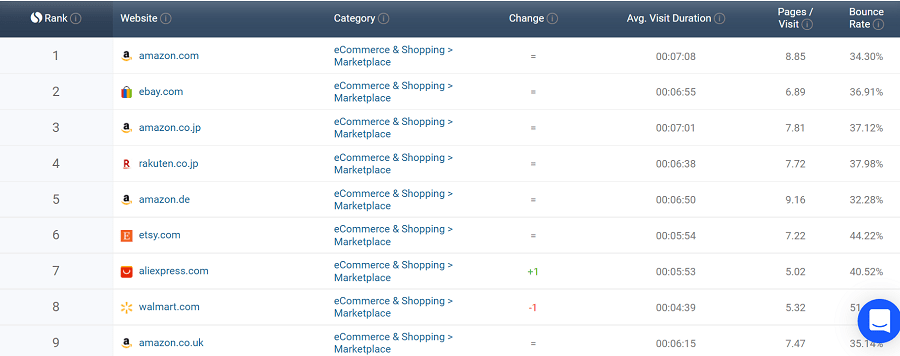
According to the latest data published by the platform, eBay has 138 million active buyers worldwide. This alludes to the fact that, just like Amazon, eBay can be used as a major advantage for all types of sellers, including dropshippers, wholesalers, standard retailers, and others.
When it comes to eBay’s eCommerce sales, the data published on Statista shows that in the second quarter of 2022, the gross merchandise volume of eBay stands at 18.6 billion U.S. dollars.
So, how to decide between these two major eCommerce marketplaces? Regardless of their popularity, both Amazon and eBay characterize themselves with various features and qualities. It doesn’t mean that if Amazon is the number one platform based on annual sales it would be the better choice for you. Different businesses have different needs, and therefore, you need to analyze and measure every single characteristic of both platforms.
So let’s start by listing the key differences in dropshipping on Amazon and eBay to help you make a decision. Our comparison consists of the following categories:
To successfully sign up on Amazon and create your profile, you’ll need to keep in mind only a few things, which we explain in the steps below:
STEP 1: Sign up for an Amazon seller account

STEP 2: Create your product listings
STEP 3: Connect your Amazon store with your dropshipping store
Just like with Amazon, the eBay registration process requires you to open a seller account, build product listings, and install the eBay app in your online store. Here’s how you can do this:
STEP 1: Sign up for an eBay seller account

STEP 2: Set up your eBay account

STEP 3: Create your product listings

STEP 4: Connect your account with your dropshipping store
Both eBay and Amazon’s registration processes are quite straightforward and provide sellers with easily manageable steps that’ll lead them to build their eCommerce stores. The only significantly visible difference is present in the category selection process: Amazon needs to approve all product categories selected by sellers prior to allowing them to list items, while eBay doesn’t require this.
Amazon offers an extensive selection of products you can sell online. Here’s an overview of the items you’re allowed to list, while for a more detailed product outline, you can check out this Amazon table of categories.
Note: Even though selling in a category doesn’t require Amazon’s approval, certain products might require approval for selling. Therefore, before deciding what kind of products you are going to sell, it’s vital to know which categories and products require approval from Amazon.
eBay provides sellers with a large product classification you can check out on eBay’s Category and Classification page, all in all 12 item categories, some of which are:
Note: While you can sell numerous products on eBay, there is a list of eBay’s restricted items. Ensure to double-check the nature of your products before entering the eBay marketplace.
Amazon appears to have a slightly wider category diversity due to following the trends in the global market demand. eBay, on the other hand, has fewer categories, however, each one comes with several subcategories, thus still offering sellers enough choices and more organized listings.
Amazon dropshipping is a completely legal business to pursue, however, the platform demands from sellers to comply with their dropshipping policy which includes a few important regulations:
Note: Before getting started, take a close look at Amazon’s dropshipping policy in detail.
Dropshipping on eBay is permitted as long as dropshippers follow the platform’s selling policy, and stick to these rules:
Note: Ensure to review the complete eBay’s dropshipping policy before opening your store.
Check out: Best eBay suppliers
When it comes to the platforms’ dropshipping policies, both request dropshippers to follow similar terms and conditions and both apply certain restrictions in order to secure sellers with a safe and smooth experience.
Amazon has a rather flexible policy regarding international sales, covering some of the biggest markets around the world, amounting to 16 online marketplaces Amazon dropshippers can tap into. It’s a great choice if you’re looking to build an international eCommerce business and reach millions of customers. Check out the Amazon international selling guide to learn about specific regulations each marketplace requires sellers to follow.
You can officially sell via Amazon in the following locations:
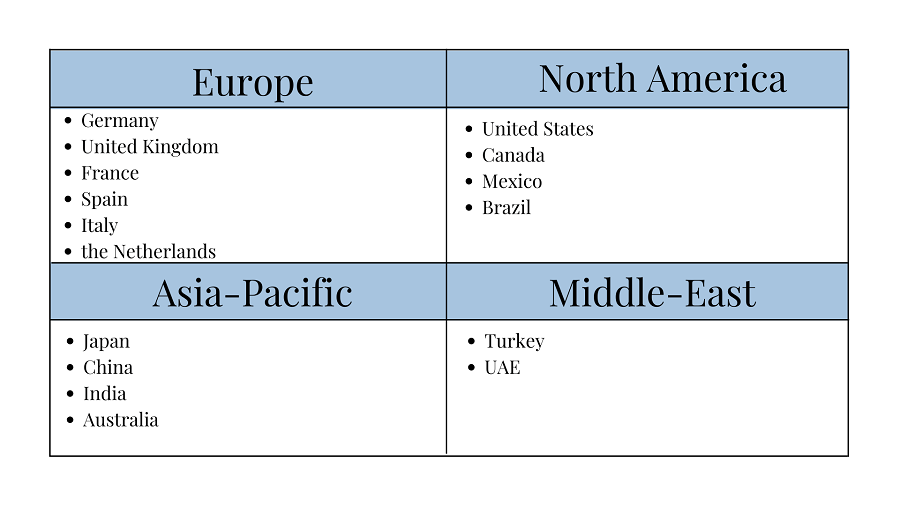
Note: Amazon offers account unification for North America and Europe, allowing you to sell in these markets under one account per continent. However, to sell in the Asia-Pacific region, you’ll need to register a separate account for each country that falls under this category.
eBay has a slightly more rigorous policy concerning international markets. Nevertheless, as long as you follow the cross-border rules and regulations provided on-site and stick with eBay’s selling internationally policy, you can try selling in any of the countries listed below.
You can sell in these locations:
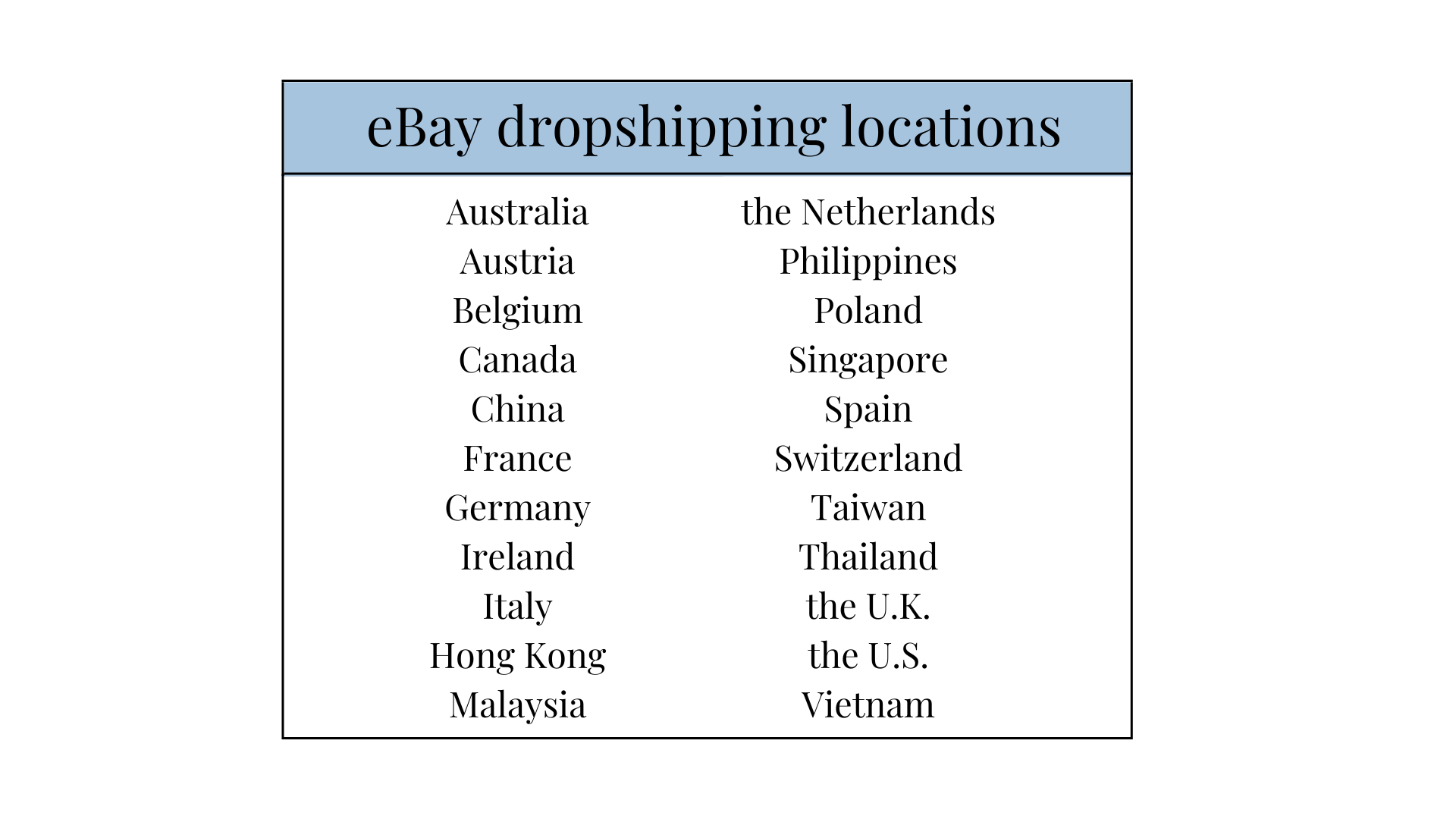
Because you’ll be entering into one or multiple international markets that function differently from one another, it’s expected that both platforms might have their own separate policies on worldwide sales. That being said, both eBay and Amazon have set up different rules when it comes to selling winning dropshipping products outside your country, so, it’s best to consult their extended regulations in order not to miss out on anything important.
Just like every other eCommerce platform, Amazon charges for the services it provides to sellers. To get a better grasp on them, we can divide the platform’s fees into three categories:
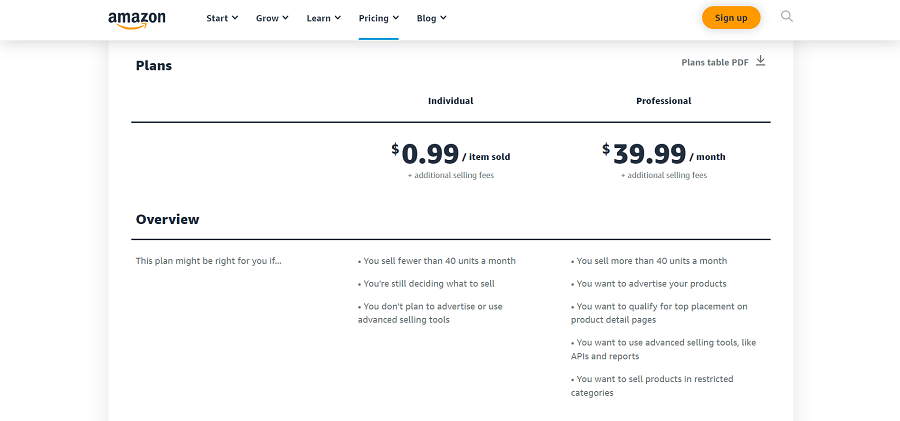
In contrast with Amazon, eBay has two types of fees that depend on the different product categories.
Both platforms entail similar fee categories but under different names: Amazon’s subscription fee is equivalent to eBay’s insertion fee, while the Amazon referral fee is the same thing as eBay’s final value fee. The other noticeable difference is in the fee amount.
Amazon has its own fulfillment service called Fulfillment By Amazon (FBA), enabling sellers to ship their products to Amazon’s fulfillment centers, where their inventory will be stored, packed, and delivered directly to customers.
Of course, this service is optional and you’re free to arrange your own shipping process. However, if you do decide to go with the FBA, there are the main expenses you’ll have to take care of:
Although eBay doesn’t have its own fulfillment center, in 2020 the platform launched the optional Managed Delivery plan, which allows sellers to provide end customers with timely and reliable delivery.
However, unlike Amazon which owns and manages its own warehouse network, eBay has built a network of third-party logistics partners(3PLs) that oversee the storing, packing and delivery of products.
Both Amazon and eBay offer fulfillment services, however, the Amazon service takes care of the storing, packing, and shipping of the products, while the eBay one is mostly based on third-party logistics partners that take over those tasks.
As with every other type of business, dropshipping on Amazon has both pros and cons. This isn’t necessarily a bad thing as it allows sellers to learn about what their business will benefit from as well as be aware of what to keep an eye on and always be one step ahead.

Dropshipping businesses on eBay are also met with advantages and disadvantages. However, as already mentioned, the cons are nothing to feel discouraged about as they can always be met with alternative solutions by following a few dropshipping tips and prevented from affecting your business.
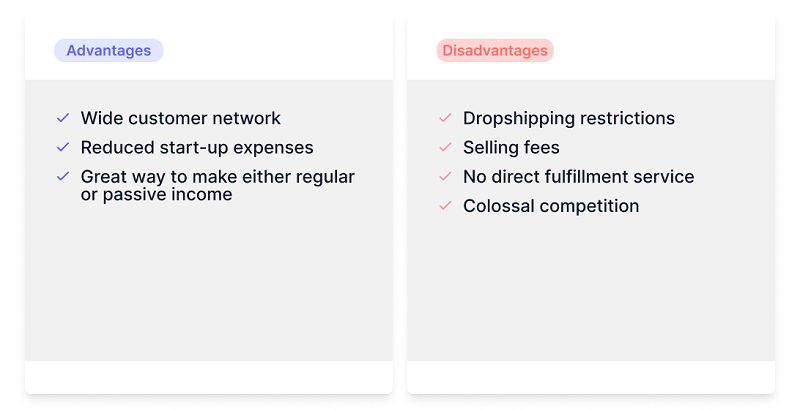
Sadly, we can’t name the winner of this battle because there is none! With each marketplace having its unique traits and services, both eBay and Amazon bring to the table numerous benefits of dropshipping.
At the end of the day, every online store owner has a favorite marketplace for placing its products and you can’t argue with that. Each opinion is based on personal experience, therefore you shouldn’t blindly follow everyone’s advice. The right approach is to measure the pros and cons of both marketplaces and compare them against your needs and requirements.
Whatever you choose you won’t make a mistake. Ultimately, your decision should be based in accordance with your business’s long-term goals and nothing else.
As of 2022, it’s estimated that Amazon has over 300 million active users, while eBay is hosting around 138 million active buyers worldwide.
Both eBay and Amazon are great platforms to buy from as they both offer a wide selection of products and categories customers can shop from.
Selling on eBay is slightly cheaper than selling on Amazon. However, it’s important to note that Amazon fees are still quite affordable for sellers as well.
No. Regardless of which platform you’ll choose, you’ll still have the same chances to create a profitable business. There are a lot of factors that go in when it comes to building a lucrative online store (products, competitive pricing, brand awareness, etc.), which most of the time have very little to do with the platform you’ve chosen to sell on.
Amazon, as well as eBay, are equally reliable platforms as they’ve developed strict selling policies that protect sellers’ interests and if needed suspend sellers if unusual behavior has been detected.
People most likely use eBay instead of Amazon because the platform might align better with their business goals. However, that doesn’t mean that eBay is much more business-friendly than Amazon as both platforms share the same business opportunities, but eventually, it all comes down to personal preferences and objectives.
Both Amazon and eBay provide sellers with safe environments, ensuring that their businesses as well as their customers are well protected.
Dropshipping from Amazon to eBay is generally allowed, but not recommended to do. The activity involves sellers purchasing items on Amazon and selling them on eBay usually for higher prices. This can cause significant issues, as customers can easily stumble upon the same products on Amazon and feel deceived, leading them to bad-mouth your business. On eBay, this business model goes against its policies and it’s known to ban sellers for pursuing it.
What is dropshipping?